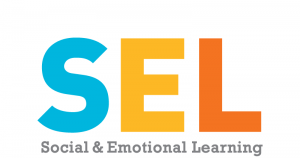Welcome!
The Sweetwater Union High School District Social and Emotional Learning (SEL) resources include the key components of SEL as defined by the California Department of Education California’s Social and Emotional Learning Guiding Principles ; that promote the comprehensive benefits and positive outcomes of SEL for staff, students, families, and other adults working with students.
What is SEL?

We define social and emotional learning (SEL) as an integral part of education and human development. SEL is the process through which all young people and adults acquire and apply the knowledge, skills, and attitudes to develop healthy identities, manage emotions and achieve personal and collective goals, feel and show empathy for others, establish and maintain supportive relationships, and make responsible and caring decisions.
SEL advances educational equity and excellence through authentic school-family-community partnerships to establish learning environments and experiences that feature trusting and collaborative relationships, rigorous and meaningful curriculum and instruction, and ongoing evaluation. SEL can help address various forms of inequity and empower young people and adults to co-create thriving schools and contribute to safe, healthy, and just communities.
Introductory Videos
Video 1: What Is SEL?
Video 3: Edutopia—What Is SEL?
California’s Social and Emotional Learning Guiding Principles:
1. Adopt Whole Child Development as the Goal of Education
Take a systems approach to promoting student academic, social, and emotional learning, physical well-being, and college, career, and civic life readiness. Name SEL as not a “nice to have,” but a “must have” to ensure student success in school, work, and community.
2. Commit to Equity
All students must have opportunities to build SEL skills and receive an assets-based educational experience that is personalized, culturally relevant and responsive, and intentionally addresses racism and implicit bias. Use practices that build on the existing strengths of students, educators, families, and communities.
3. Build Capacity
Build the capacity of both students and adults through an intentional focus on relationship-centered learning environments and by offering research-based learning experiences that cultivate core social and emotional competencies.
4. Partner with Families and Community
Maximize the resources of the entire school community, including expanded learning opportunities, early learning and care programs,
and family and community partnerships, to advance SEL and student well-being.
5. Learn and Improve
Adopt continuous improvement practices and use evidence to guide decision-making while aiming to enhance the quality of student social and emotional learning opportunities. Use data to inform improvement of instructional and school practices, not for accountability purposes.
Resources
To better understand the role of Social Emotional Learning in schools, the resources listed below are a good starting place. This list will be updated as relevant information is gathered and reviewed:
- Collaborative for Academic Social and Emotional Learning (CASEL)
- The CASEL Guide to Schoolwide Social and Emotional Learning
- CDE Social Emotional Learning Resources
- California’s Social and Emotional Learning Guiding Principles
- California’s Collaborating States Initiative (CSI) Social Emotional Learning in California: A Guide to Resources
- The Center on Great Teachers and Leaders

